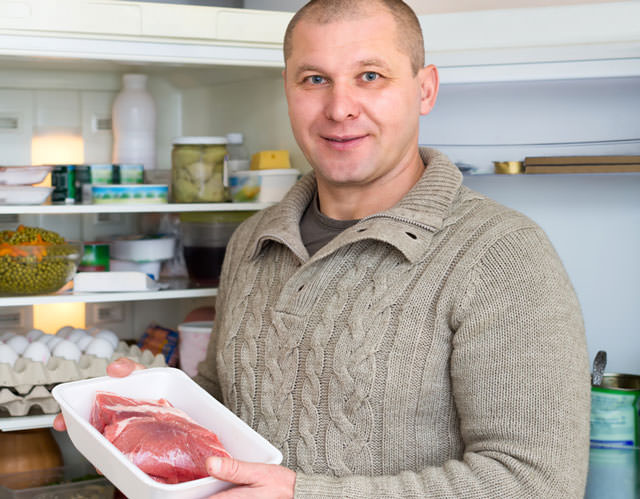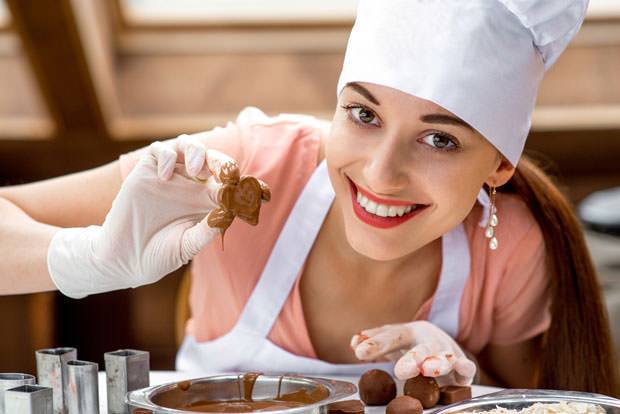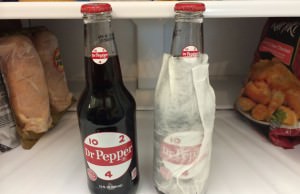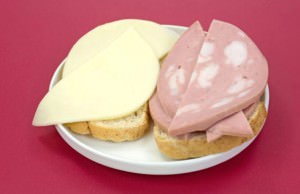21 Most Common Cooking Mistakes
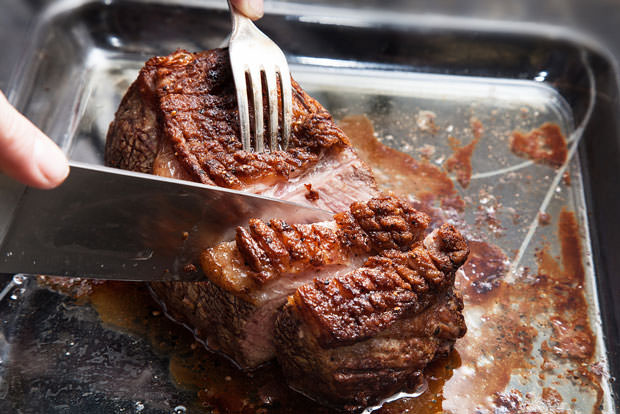
It takes a lot of skill and dedication to become a master chef, and nobody can make the jump from being an apprentice to becoming skilled in the kitchen without making a few (or a few hundred) mistakes along the way. We’ve compiled a short list of the 21 most common mistakes people make in the kitchen, so let’s see which made the cut:
1. You serve meat immediately
If you’re planning on cooking meat, you need to find the right meat, prepare it with the right ingredients, cook it nicely, and then chop it up and serve it when it’s done. The main issue that people come across here is that they chop it up the moment they pull it from the oven, grill, stove, whatever. This is bad since all the juices that you’ve sealed in while you were cooking the meat will just pour out and go to waste.
Why? Imagine that your steak is a large bundle of straws, and each straw is filled with liquid – these are the muscle fibers of the meat. As you cook the meat, the straws become narrower and put pressure on the liquid that is found inside the meat. This liquid ends up in the meat itself, and if you cut it open immediately, you lose much of the juices that we all love so much.
Every steak loses around 12 percent of its weight in the cooking process. If you cut it open too soon, you lose an additional nine percent. That’s a lot of percentages.
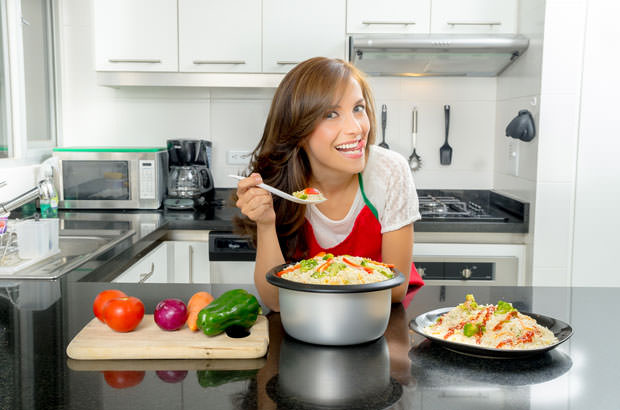
2. You don’t taste food while cooking
Do you taste your food while you’re cooking it, or do you finish a meal without trying it and then hope for the best? It doesn’t matter if you’re somebody who cooks casually or a master chef at an expensive restaurant, always taste your food while you are making it. Getting to know your dish during every stage of its preparation is one of the key steps to evolving as a cook and learning how to cook beyond the recipe.
This also enables you to make the smallest of adjustments with the most accurate of judges. Yes, you can see the changes in your onions and your soup boiling, you can smell and separate the good foods from the bad, but in the end, you’re going to eat that food. So what better way to know whether you’re doing good or you should stop immediately than to give it a little taste?
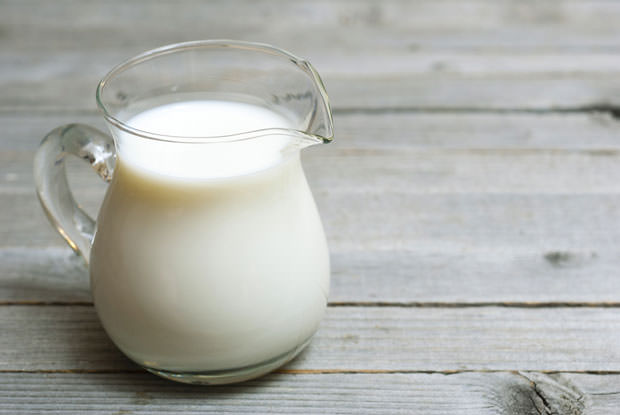
3. You throw away leftover buttermilk
Buttermilk certainly makes for the best biscuits and marinade for fried chicken, but we can understand that finding a container smaller than a quart is not the easiest of things. There were some grocery stores that used to sell perfect 1-cup portions, but, unfortunately, this has fallen out of popularity recently. So what’s the solution here? Well, let us tell you one thing, the worst that you can do is to throw it away. Why not just freeze it instead?
It really can’t be any more simple than this. Just get an ice tray and pour your excess buttermilk into it, let it freeze and voilà – you have frozen buttermilk cubes tomorrow morning. The next time you need just a slight amount of buttermilk, you won’t have to buy a new package – just thaw your cubes overnight or use a microwave set to low power. Make sure to whisk it or run in a blender to allow the solids to reincorporate before using it.

4. You don’t read through the entire recipe
Make sure to read the recipe a couple of days in advance if you’re planning on having guests and making a special meal just for them. Remember – even the best-written recipes sometimes don’t include all the important information at the top of the page. So be a wise cook and approach your recipe with dedication and a critical eye; you can read it before bed or if you fancy reading something while you’re in the loo.
Follow the pros’ advice on gathering your mise en place, meaning to have all the ingredients gathered, prepared, and ready to combine before you even think about turning on the heat. The worst thing that can happen to you is to learn that you need to marinate your brisket overnight in order to complete the recipe while your guests are waiting for dinner in the living room.
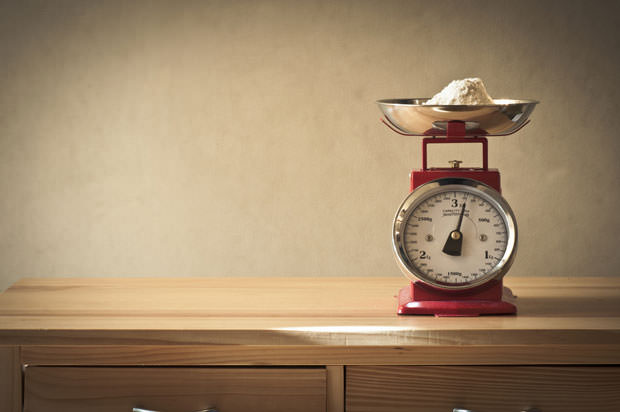
5. You don’t use appropriate measuring tools
One of the most common cooking mistakes is failing to use proper measuring tools when measuring your milk, water, oil, flour, etc. Don’t think that putting 200 grams instead of 250 grams of an ingredient is a not that big of a deal – it might prove to be a crucial factor to why your meal didn’t come out the way you planned and why everyone now thinks you’re a bad cook.
So, you better equip yourself with some measuring tools. They are relatively cheap and easy to find, and you can even make them on your own. It shouldn’t be too much of problem to create a simple container – what is important is that you mark the measures as properly as possible. As far as dry ingredients like sugar and flour are concerned, you will often come across recipes where the amount is measured in teaspoons. You ought to have a teaspoon in your house, really.
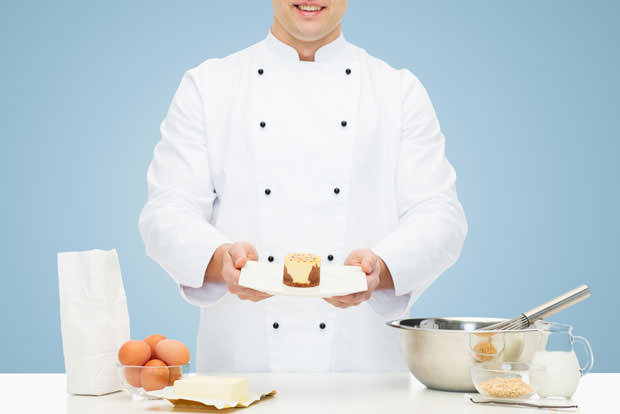
6. You don’t soften butter properly
This has happened to thousands and thousands of people – your cookies spread too much, or your cakes end up too dense. The most usual cause (and one of the most common mistakes you can make in the kitchen) would be that you forgot to soften the butter and just threw it in the microwave to do the job for you quickly. Of course, the results are far from satisfying, so try not to put yourself in this situation again.
It is way better to let it stand at room temperature for about 45 minutes. You can significantly speed up the process if you cut the butter into smaller portions before letting it stand at room temperature. The next step should be learning how “soft” is properly softened butter – it should yield slightly to gentle pressure, and you should be able to go through it with a knife without any resistance, but it shouldn’t be near liquid! Butter that is too soft means your cookie dough will be like batter, spreading too much and losing shape. It also won’t cream properly with sugar, spelling a disaster.
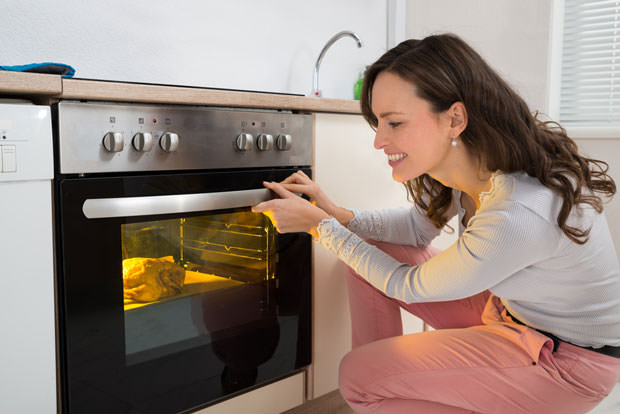
7. You cook EVERYTHING on high/low
Even the most seasoned of cooks sometimes catch themselves cooking on either too hot or too cold temperatures. This usually revolves around stove cooking, so sauteing, frying, and stir-frying are the main issues here. You tossed the chicken breasts into a pan with the outside ending up cooked well, and the inside next to raw? You scrambled some eggs and they are brown and firm on the outside and liquidy on the inside? You set the smoke alarm off more often than necessary? These are all the results of cooking on high temperatures.
In fact, you will very rarely use the highest of temperatures when cooking – usually when trying to sear or brown food, or bringing something to a boil. Opt for medium or medium-high temperatures, and make sure you know your stoves. Experiment a bit and learn the temperature ranges of your cooking device; every artist has to learn about their tools first!

8. You use only one type of oil
There really isn’t just one type of oil, and you would do well to learn about different types as soon as possible. Not only are there different flavors, with every flavor working best with a specific type of food, but they also have different smoke points, and people usually rank them just by looking at smoke points, which is downright insane.
Why would you even limit yourself to a single type of anything in life? Oils are no exception – if you like the flavor of Asian cuisine, sesame oil is a great choice for you. If you prefer oil that has its own taste and adds the fatty flavor, try cooking with butter, lard, or even ghee. Coconut oil is also great for a whole heap of reasons, just beware its strong, nutty, rich flavor – you don’t need coconut oil with lighter dishes.
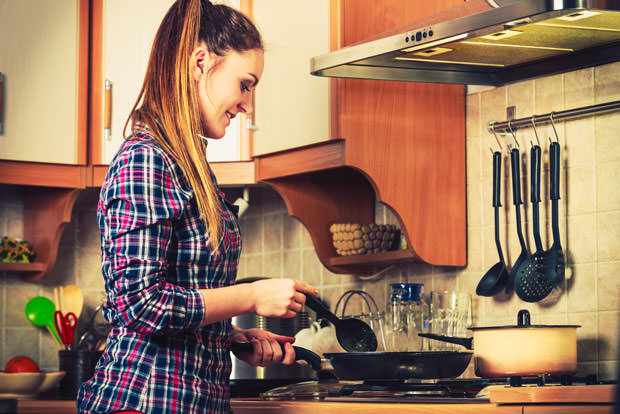
9. You’re overcrowding your pan
If you have ever noticed how your baked cookies get stuck to one another, or your sauteed meat or veggies take forever to cook through, you probably realize something’s wrong. What you don’t realize is that you’ve probably overcrowded the pan many times throughout your cooking history. Separate your cooking into batches, it’s actually that simple, and it’s really all that takes to solve this problem.
We understand that sometimes the urge to get all things done in one go is strong, but you will usually end up do more harm than good by doing so. Overcrowding your pan actually slows down the speed of your cooking process, or if you’re sauteing vegetables, you end up with a mushy, wet mess instead of the nice and crispy texture you were looking for. Always make sure that your food has enough room to move around the pan.
10. You thaw meat on room temperature
This is a very common mistake, and you’re actually putting all the people who will eat your meal in danger. So, you have guests tonight but you forgot to pull the meat out of the freezer and put it in the fridge to slowly thaw. You pull it out and put it under a sink, or even just leave it lying around the kitchen at room temperature. The meat might thaw in time, but the “danger zone” in terms of bacterial growth in food is between 40°F and 140°F. And between a 40°F and 140°F, right in the middle, is everyone’s average room temperature.
So what’s the solution here? Don’t worry, it’s rather simple, you just take your meat and put it in a sealed bag, and then put it in a bowl of cold water. Make sure to change the water out every half an hour so that the water doesn’t come to room temperature (remember, bacteria), but after an hour and a half or so, the meat should be thawed and ready.
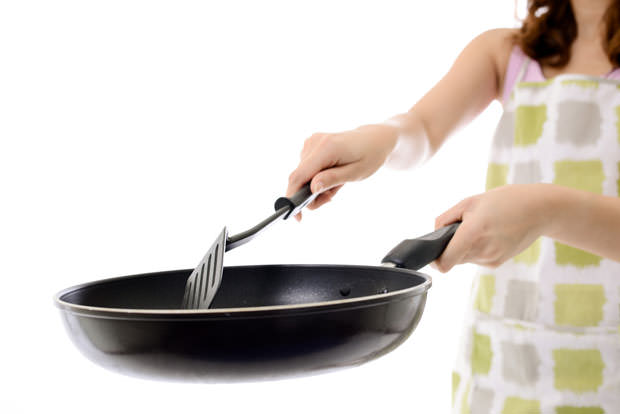
11. You clean cast iron pans with soap and water
You’ve finished dinner, all the cast iron pans you used are now full of oil and food that’s stuck on them, and it’s time to clean them. Sure, you know that cast iron pans require a bit of a special treatment, but who has the time for such trivial details? You give them a slight scrub with a sponge and some soapy water, rinse with some hot water, and then dry them with a paper towel. It would be safe to assume that a quick scrub won’t cause much damage, right? Very wrong.
The moment the hot soapy water touches your pan, it unleashes a chain of events that end up destroying the “seasoning” on the pan, referring to all the food that’s stuck on the iron itself. Hitting the polymerized oil with dish soap and then scrubbing it and rinsing it with hot water causes these oils to break down and float away. Basically, you’re destroying your pan by scraping it down the drain.

12. You don’t know which dish is for what
Every new cook tends to think something along the lines of “It’s just a pan, throw some food in and cook it up, how hard can it be?” Well, it can actually be pretty hard. We aren’t here to give you a complete and detailed analysis of every individual type of pan that exists, but if you try to grill cheese in a kettle, you’re in for a bad time. It’s not the nitpicky shenanigans that famous chefs often rant about just to feel important, but you should really know your types before you attempt anything.
Take a cast iron skillet and put it on the hottest flame imaginable, and you’ll be just fine. Do the exact same thing, with the exact same temperature, with a nonstick frying pan, and you’ll have the impression that an exhaust pipe just happened to break in your kitchen. Sear off and fry your potatoes in a frying pan, you’ll get that nice, crispy texture everyone loves. Do the same with a big pot designed to boil water, and you’ll be eating used tea bags.
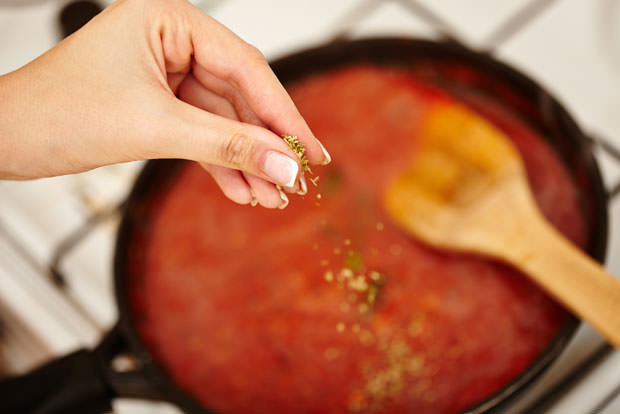
13. You go crazy with the seasoning
“Look, mate, I watched a couple of cooking shows, it’s all about the spices, the more the better. Let’s put 500 grams of garlic powder, cumin, ginger, nutmeg, and cinnamon on our steak, it’s going to rule!” – said no one ever. If you guess the right amount and type of seasoning, you’ve already done 30% of the work. But remember that it’s better to put less than to overdo it. If you overdo it, you’ll feel nothing but the seasoning.
When you engage in serious cooking, you’ll be tempted to buy a full rack of spices because you want to take your skills to a whole new level. However, restraint is the key. Nobody likes chili that’s nothing but meat or beans made with hot water, but always remember that seasoning exists only because you need to enhance the flavor of your masterpiece. It’s not the main aspect of the dish and should never be one.
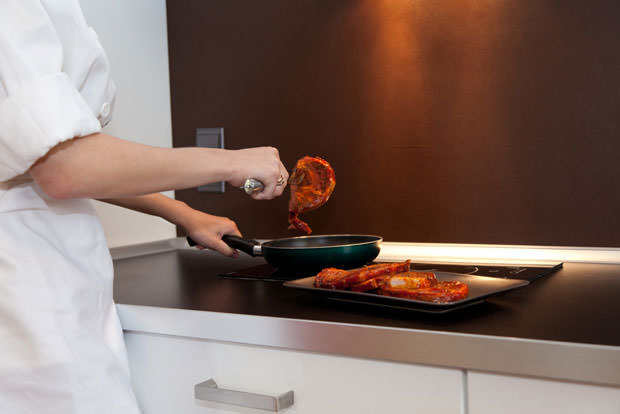
14. You flip meat around too much
Newbie cooks often get scared by the loud sizzling sound meat makes when it’s being fried, so they panic and flip it around after as little as 10 seconds “to make it even on both sides,” only to learn that it hasn’t even lost its pink color. And how could it possibly? The recipe says to let it sit on high heat for five minutes per side, so don’t even think about lifting it before those five minutes have passed. Every time you do so, you mess up the time it needs to naturally do its thing.
Also, if you’ve ever tried pan frying your chicken, you’ve certainly come across the following situation – you run a spatula under it, only to realize it’s completely stuck to the bottom. Naturally, you will assume you caught it too late, whereas, in fact, you caught it too early. Although it sounds crazy, every top chef would agree with us – once the breading has cooked long enough, it separates from the pan on its own, allowing you to flip it easily.
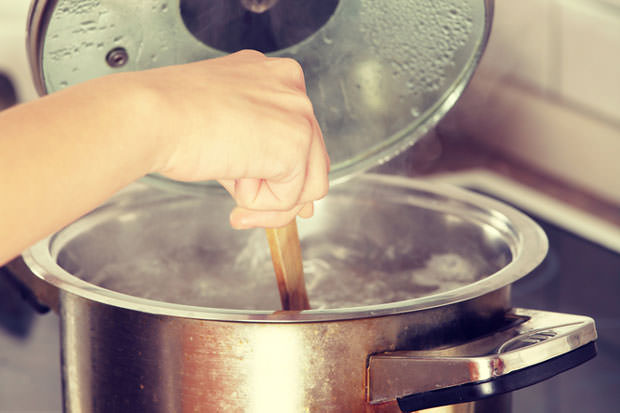
15. You simmer when you should boil
A lot of things are common kitchen mistakes, but this one is really the most repeated one. It stems from the fact that an unbelievable amount of people don’t know the true definition of simmering and just assume that simmering and boiling are the same. Simmering is basically like boiling, except at a much lower intensity – you’ll see a bubble break the surface of the liquid about every two seconds. If you have many bubbles going on, now that’s boiling, and if you’re supposed to simmer when you are boiling, you’ll probably ruin your dish.
For example, if you were to make a beef stew and boil the meat for an hour instead of simmering it for a couple of hours, you will probably get things done more quickly, but the meat will end up being dry, and very tough.
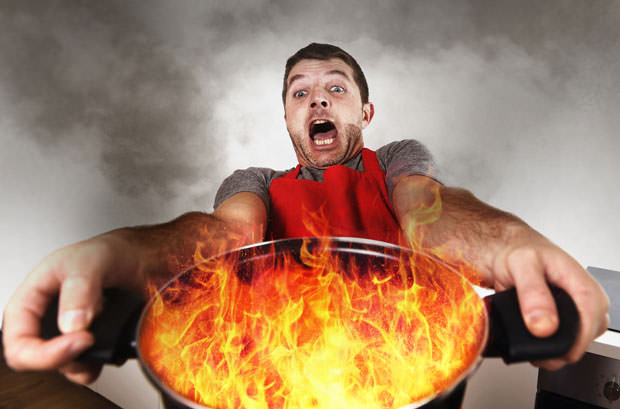
16. You don’t heat the pan enough
Food that sticks, pale meat, scallops with no sear – these are just some of the examples of what can happen if you put your food into the pan before you achieve the proper heat. The average inexperienced or hurried chef will add the oil and toss in some onions way before they were supposed to be placed in the pan, which leads to…nothing, no sizzle, no frying, just nothing.
A hot pan is pretty much essential for anything, including creating a fantastic crust on meat, fish, and poultry, sauteing vegetables, preventing food from sticking to the pan. As you can see, a lot of things depend on the high temperature of your pan. And just when is it hot enough? If you think your pan is hot enough, you can let it heat for a couple of more minutes. When you feel the temperature in the entire room rising, you’re good to go.

17. You eat food while it’s blazing hot
Everybody knows it’s only natural to serve everything right off the grill, oven, or pan into somebody’s mouth, but it’s actually a better idea to let it chill for at least a minute. If you’re not drooling from hunger, you should give it at least 10 minutes – it will have the perfect temperature for eating and you won’t burn your lips and tongue while desperately trying to munch on it.
And not only that, pork, chicken, and beef all need to rest a bit for their juices to redistribute evenly after cooking. Why would you waste all that divine liquid just because you wanted to eat 5 minutes earlier? And it isn’t just the meat that should rest since quinoa and rice both need to steam after you cook them – this is the crucial step in getting them nice and fluffy.
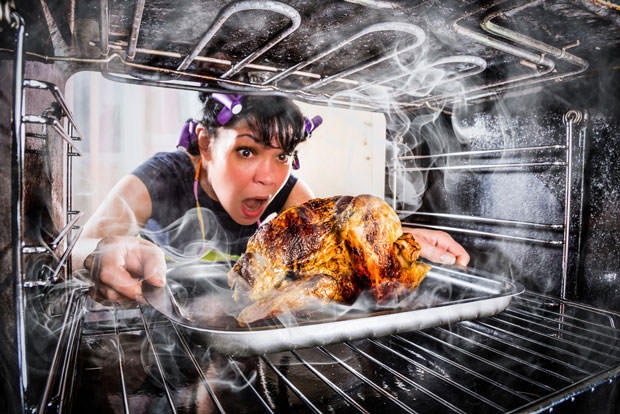
18. You pull meals from the oven too soon or too late
Even though everyone is afraid of bacteria when dealing with everything from omelets to pork chops, you should always pay attention to how your food is behaving while in the oven. Although we advise caution and think you should pay attention to things like bacteria all the time, completely destroying your dish in the process is not a solution either.
When you deal with meat, feel free to use a thermometer to check the right temperature, and then follow the progress it’s making. When you make scrambled eggs, get them out of the pan as soon as they’re done since they will continue to cook even when they are on your plate, sitting at room temperature. And if you’re making brownies and want them all nice and fudgy, the recipe’s the golden rule – if it says 40 minutes, take them out in 40 minutes, no sooner, and definitely not later.
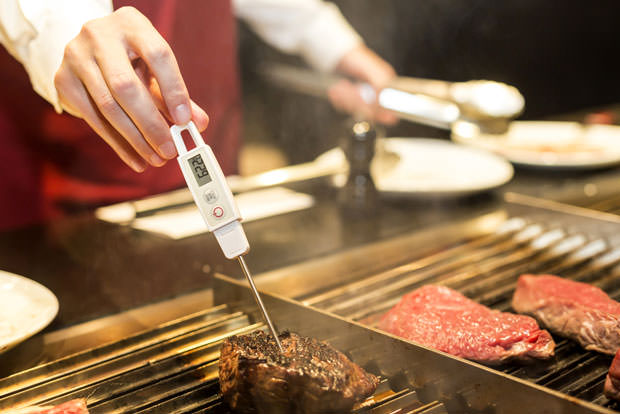
19. You still don’t have a meat thermometer
Since we previously mentioned them, we may as well expand our explanation and tell you just how awesome they are. You will never have to worry about your beef tenderloin turning out over or undercooked, or your roast chicken, or your leg of lamb, or pretty much any meat. It’s a small and inexpensive device, and it’s one of the most valuable kitchen tools you can possibly own.
If you don’t mind tossing in a few extra bucks, consider getting a digital probe thermometer, which allows you to set the device to the desired temperature. There’s a heat-proof wire in it that leads to an external digital unit. This unit beeps when the meat is ready, which means you can freely commit to other things while the meat is getting ready. Also, it eliminates the need to constantly open and close your oven to check the temperature.
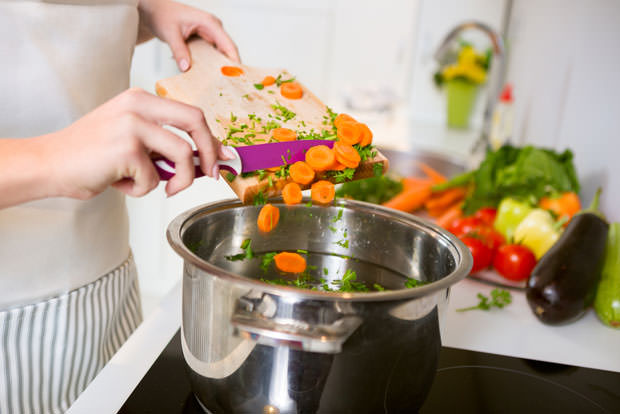
20. You forget to shock veggies
If you’ve never heard of shocking your vegetables (and believe us, many people haven’t), get ready to experience veggies in a whole new light. Toss some green beans, asparagus, or broccoli into boiling water for about 5-6 minutes and they will become vibrant green with a crisp-tender texture. This is the moment when you should shock your vegetables, which is shockingly easy to do.
Basically, what you need to do is spoon the vegetables out of the boiling water and quickly plunge them into cold water (we’re talking ice cold, feel free to add ice cubes). Some prefer rinsing them under cold running water, but this is simply a question of preferences. By shocking your veggies, you put the cooking process to a complete halt while the carryover heat will continue cooking them to the point when they are army-green and flabby.
21. You overheat chocolate
Last but not least, let’s talk a bit about chocolate for all you sweet-tooths out there. Instead of making smooth, creamy, divine chocolate, people often end up with grainy, scorched, and separated chocolate, which might taste OK, but it could be so much better. The best way to melt chocolate is to have patience. Heat it gently, gradually remove the heat before it’s fully melted, and stir until it’s smooth.
If you’re using a microwave, caution is key. Stop every 30 seconds to stir, or you might end up with chocolate you won’t be able to combine with anything. If you use a double boiler, always make sure that the water is simmering, not boiling. If you still have doubts about what the difference between simmering and boiling is, go back to #15 and read it again. Remember, chocolate is a delicate thing and you can ruin it very easily.

